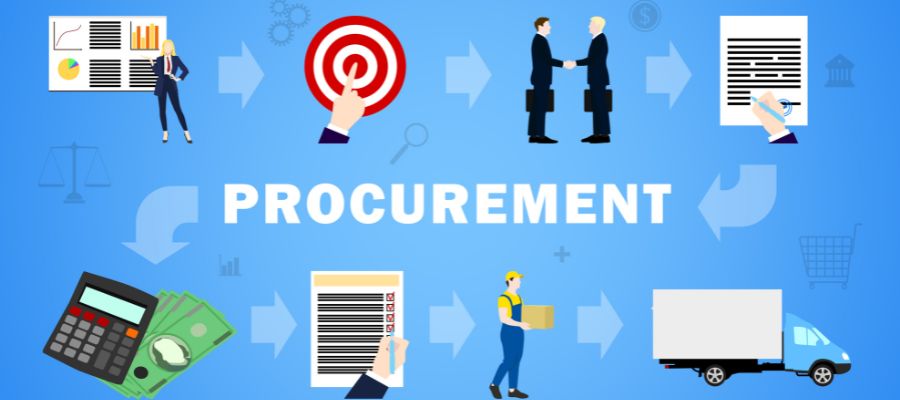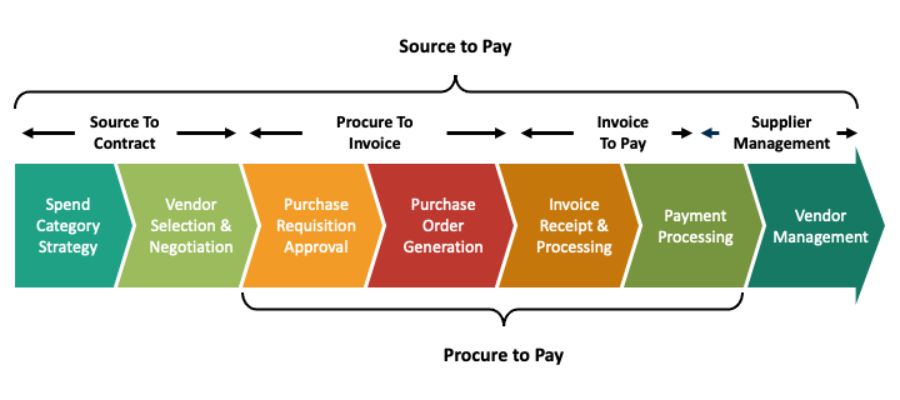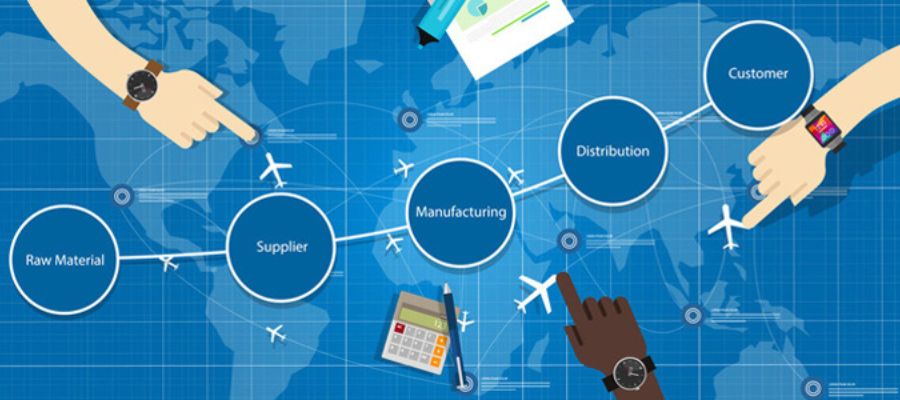
In the rapidly evolving business landscape, procurement transformation has become an important strategy for organisations aiming to enhance efficiency, lower costs, and drive innovation.
This guide provides a step-by-step approach to procurement transformation, delving into the strategy, roadmaps, and consulting services that can propel your procurement function into the digital age.
Understanding Procurement Transformation

Procurement transformation is the comprehensive overhaul of an organisation’s procurement processes, systems, and strategies to improve performance. It involves adopting digital procurement transformation techniques, redefining procurement strategies, and implementing advanced technologies to streamline operations. The key objectives of procurement transformation include:
Cost Reduction: Achieving significant cost savings through optimised procurement practices.
Efficiency Gains: Enhancing the speed and accuracy of procurement processes.
Supplier Innovation: Leveraging strategic supplier relationships to drive innovation.
Risk Management: Strengthening risk management practices to ensure supply chain resilience.
Assess the Current State

The first step in any procurement transformation journey is to assess the current state of your procurement function. This involves thoroughly analysing existing processes, systems, and performance metrics. Key areas to evaluate include:
1. Procurement Processes
Identify inefficiencies and bottlenecks in the current process. Evaluate the end-to-end procurement cycle, from requisition to payment, to pinpoint improvement areas.
2. Supplier Relationships
Assess the effectiveness of supplier management and collaboration. Determine the strengths and weaknesses of existing supplier partnerships and identify opportunities for enhancing cooperation and innovation.
3. Technology Utilisation
Evaluate the current use of technology in procurement activities. Assess the capabilities of existing procurement systems and identify loopholes that can be addressed through digital procurement transformation.
4. Performance Metrics
Analyse key performance indicators (KPIs) to identify areas for improvement. Common KPIs include procurement cycle time, cost savings, supplier performance, and compliance rates.
Conducting a comprehensive assessment provides a clear understanding of the current state and serves as the foundation for developing a tailored procurement transformation strategy.
Define the Vision and Goals

Once you clearly understand the current state, the next step is to define the vision and goals for your procurement transformation strategy. This involves setting clear, measurable objectives that align with the overall business strategy. Key goals may include:
1. Cost Reduction
Improve procurement practices to achieve significant savings. However, this may involve negotiating better terms with suppliers, consolidating purchases, and leveraging economies as well.
2. Efficiency Gains
Streamline processes to reduce cycle times and increase productivity. Implementing automation and digital procurement transformation solutions can significantly enhance process efficiency.
3. Supplier Innovation
Foster innovation through strategic supplier partnerships. Encourage suppliers to co-develop new products and services and leverage their expertise to drive innovation.
4. Risk Mitigation
Enhance risk management capabilities to ensure supply chain resilience. Further, robust risk assessment and mitigation strategies should be implemented to address potential disruptions and ensure continuity of supply.
Defining a clear vision and set of goals provides direction and purpose to the procurement transformation journey, ensuring that all efforts are aligned with the desired outcomes.
Develop a Procurement Transformation Roadmap

A well-defined procurement transformation roadmap is crucial for guiding the transformation journey. This roadmap outlines the key initiatives, timelines, and milestones to achieve the desired goals. Critical components of a procurement transformation roadmap include:
1. Digital Procurement Transformation
Implement advanced technologies such as AI, machine learning, and blockchain to automate the process of procurement. Digital procurement transformation can significantly improve efficiency, transparency, and decision-making.
2. Procurement Transformation Process
Redesign procurement processes to eliminate inefficiencies and improve collaboration. This may involve reengineering workflows, standardising procedures, and implementing best practices.
3. High Tech Procurement Transformation
Leverage cutting-edge technologies to drive innovation and improve procurement outcomes. Technologies like the Internet of Things, predictive analytics, and robotic process automation (RPA) can revolutionise procurement practices.
The procurement transformation roadmap should be detailed and actionable, providing a clear path to achieving the desired goals. It should include specific initiatives, timelines, and milestones, as well as the resources required for implementation.
Engage Stakeholders and Build a Coalition

Successful procurement transformation requires the support and engagement of key organisational stakeholders. This includes senior leadership, procurement teams, suppliers, and other relevant departments. Key steps to engage stakeholders include:
1. Communication
Communicate the procurement transformation strategy’s vision, goals, and benefits. Use various communication channels, such as presentations, workshops, and newsletters, to keep stakeholders engaged.
2. Collaboration
Foster collaboration and buy-in from all stakeholders through regular meetings, workshops, and feedback sessions. Further, encourage open dialogue and active participation to ensure that all perspectives are considered.
3. Change Management
Implement effective change management practices to ensure a smooth transition and minimise resistance. This may involve training and support, addressing concerns, and celebrating successes.
Building a coalition of engaged stakeholders is essential for driving the procurement transformation process and ensuring all efforts align with the desired outcomes.
Invest in Procurement Transformation Services and Consulting

Investing in procurement transformation services and consulting can provide valuable expertise and support throughout the transformation journey. These project management services can help organisational design and implement effective procurement strategies, optimise processes, and leverage advanced technologies. Key benefits of procurement transformation consulting include:
1. Expert Guidance
Access to experienced consultants with deep industry knowledge and expertise. Consultants can provide valuable insights, best practices, and tailored solutions to address specific challenges.
2. Customised Solutions
Tailored solutions that address your organisation’s unique needs and challenges. Consultants can help design and implement solutions that align with your business goals and objectives.
3. Accelerated Transformation
Faster implementation of transformation initiatives through expert support and maintenance services. Consultants can help streamline the transformation process, ensuring that initiatives are executed efficiently and effectively.
Procurement transformation services and consulting can play an essential role in ensuring the success of your transformation journey, providing the expertise and support needed to achieve your goals.
Implement Advanced Technologies

Technology plays a critical role in driving procurement transformation. Organisations can significantly improve efficiency, accuracy, and agility by implementing advanced digital procurement transformation solutions. Key technologies to consider include:
1. Artificial Intelligence (AI)
AI-powered tools can automate routine tasks, enhance decision-making, and provide predictive insights. For example, AI can analyse spending data, identify savings opportunities, and optimise procurement strategies.
2. Machine Learning
Machine learning algorithms can analyse data to identify patterns and trends that start more informed procurement decisions. For example, machine learning can predict demand, optimise inventory levels, and identify supplier risks.
3. Blockchain
Blockchain technology can enhance transparency, security, and traceability in the supply chain. For example, it can create a secure and immutable transaction record, ensuring the integrity of procurement data.
4. Robotic Process Automation (RPA)
RPA can automate repetitive tasks, freeing procurement to focus on strategic activities. For example, RPA can automate invoice processing, order management, and supplier onboarding.
Implementing advanced technologies requires careful planning and execution. Organisations should start clearly understanding their technology needs and priorities and then work with technology partners and consultants to design and implement tailored solutions.
Foster a Culture of Continuous Improvement

Procurement transformation is not a one-time project but an ongoing journey. To ensure sustained success, organisations must foster a culture of continuous improvement. Critical practices to promote continuous improvement include:
1. Regular Performance Reviews
Conduct regular reviews of procurement performance metrics to identify areas for improvement. This involves tracking key KPIs, analysing performance data, and identifying opportunities for optimisation.
2. Innovation and Learning
Encourage continuous innovation through training programs, workshops, and knowledge sharing. Provide procurement teams with the tools and resources to stay up-to-date with trends and best practices.
3. Feedback Mechanisms
Implement feedback mechanisms to capture insights from stakeholders and drive ongoing improvements. This may involve conducting surveys, holding feedback sessions, and creating channels for open communication.
Furthermore, fostering a culture of continuous improvement ensures that the procurement function remains agile and responsive to changingto the business intelligence services and market conditions.
Measure and Monitor Progress

To ensure the success of your collaring transformation strategy, it is essential to measure and monitor progress continuously. This involves tracking key performance indicators (KPIs) and assessing the impact of transformation initiatives. Key KPIs to monitor include:
1. Cost Savings
Track the reduction in claiming costs achieved through transformation initiatives. This may involve comparing pre- and post-transformation spending data, analysing cost savings, and identifying areas for further optimisation.
2. Process Efficiency
Measure improvements in procurement cycle times and process efficiency. This may involve tracking the time to complete key procurement activities, such as requisition processing, order placement, and invoice approval.
3. Supplier Performance
Assess supplier collaboration, innovation, and risk management improvements. This may involve evaluating supplier performance metrics, such as on-time delivery, quality, and responsiveness.
4. Technology Adoption
Monitor the adoption and impact of advanced technologies on procurement activities. This may involve tracking the usage and effectiveness of digital retention transformation solutions, such as AI, machine learning, and blockchain.
Regularly measuring and monitoring progress ensures the procurement transformation strategies remain on track and deliver the desired outcomes. Further, it also provides valuable insights to inform future initiatives and continuous improvement efforts.
Conclusion
Retention transformation is a critical strategy for organisations aiming to stay competitive in today’s business environment. By following this step-by-step guide, organisations can develop a robust collaring transformation roadmap, implement advanced technologies, and foster a culture of continuous improvement.
Whether you are embarking on a high-tech dominion transformation or seeking to optimise your biomedical procurement transformation processes, the key to success lies in a well-defined strategy, stakeholder engagement, and investment in procurement transformation services and consulting.
Embrace the future of acquisition and unlock the full potential of your keeping function with a comprehensive and strategic approach to mastery transformation. Organisations can significantly improve efficiency, cost savings, and innovation by leveraging digital authority transformation techniques, engaging stakeholders, and investing in advanced technologies. The journey to p transformation may be challenging, but the rewards are well worth the effort.
Source: Procurement Transformation